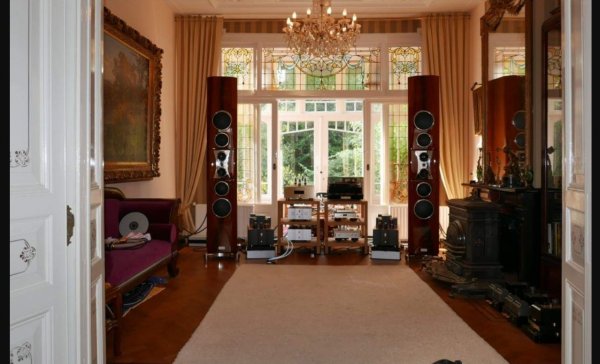Let's pretend for a moment that I'm a teenager and I'm putting my first hi-fi stereo system together. I remember very well, as if it was just yesterday, the first thing I did.
I went to the bank and withdraw money.
I went to a hi-fi stereo store and talk to the salesman.
I bought my first turntable, stereo receiver and speakers.
I went back home and install everything on my own in my room.
I turn everything on and spun my first LP in that room.
I was in heaven, no question asked, the music's playing (Opera).
Today I would build a room first, then choose the speakers to match the room acoustically, then the audio components to match those speakers acoustically, then all the wiring to match the audio components acoustically.
Building a dedicated music listening room automatically implies an adequate electric grid, pure without contamination...of course.
But, I also want to have another room where beauty and decor and music playing are all dancing equally in harmony, including the wife, the children, the grandchildren, ...all the family and friends, including the dogs and cats.
Music is good to be shared, beautiful music...classical Opera and piano chamber and solo.
The sweetest and peacefulness the music is the better our surrounding world, including all the children and families from all colors and provenance. Promote peaceful sweet music and our planet gets all the rewards, including all wildlife and humanity and overall climate? Sure, just go solar powered cars.








